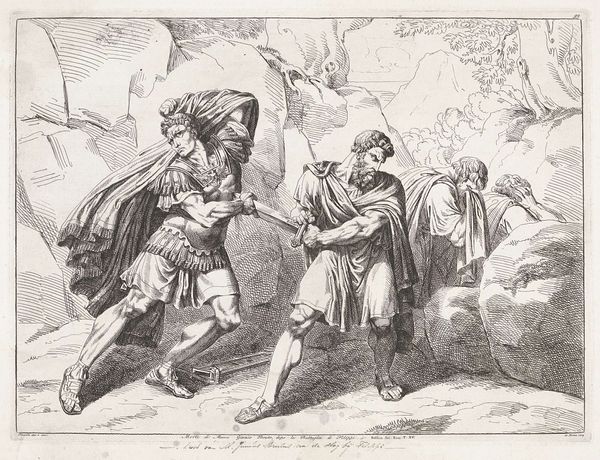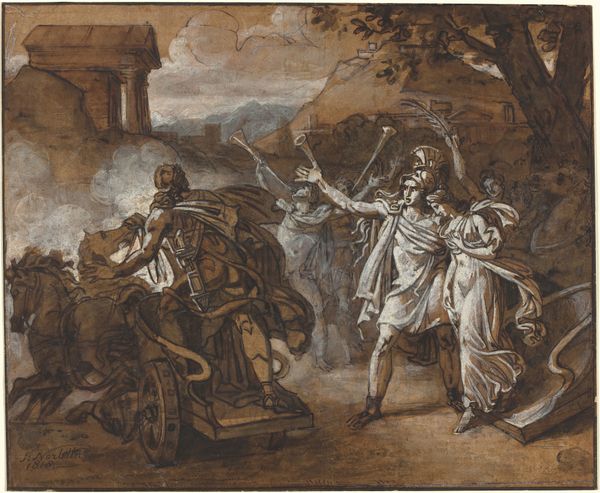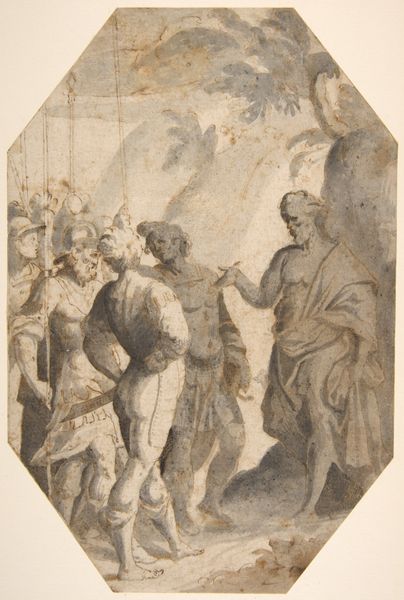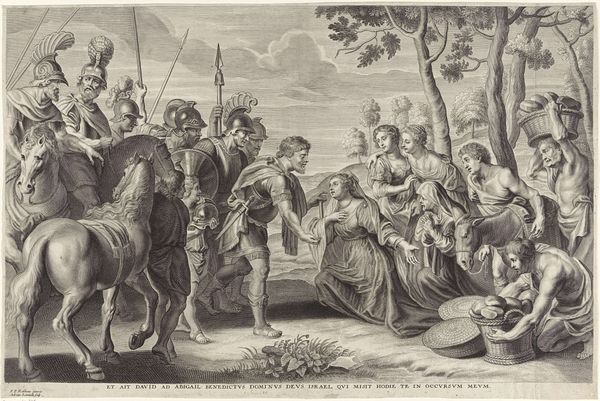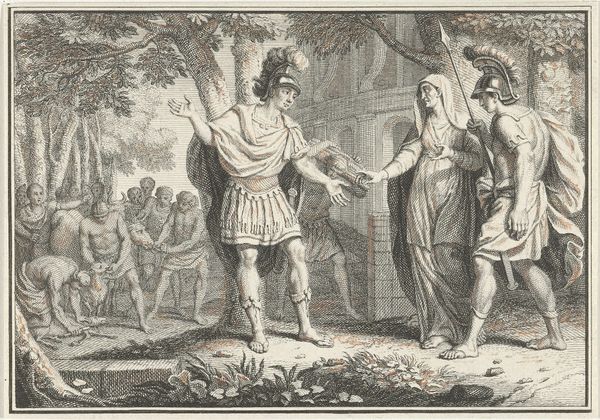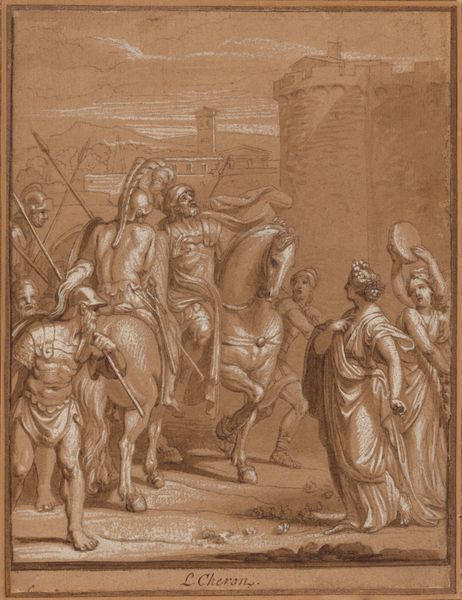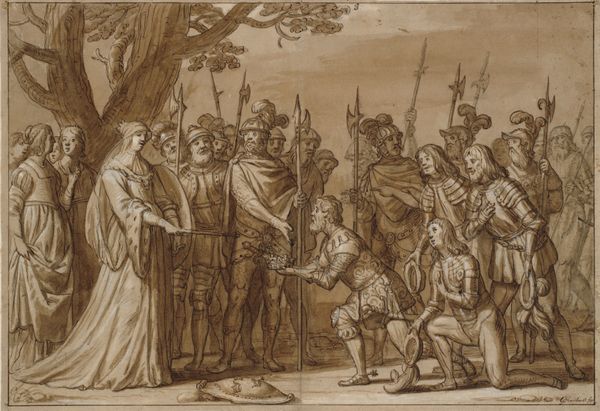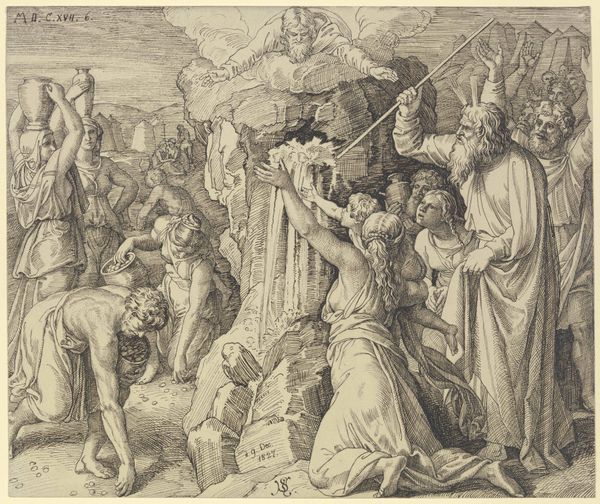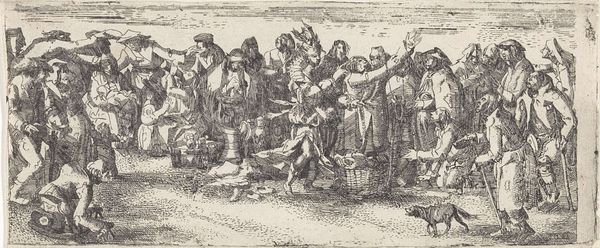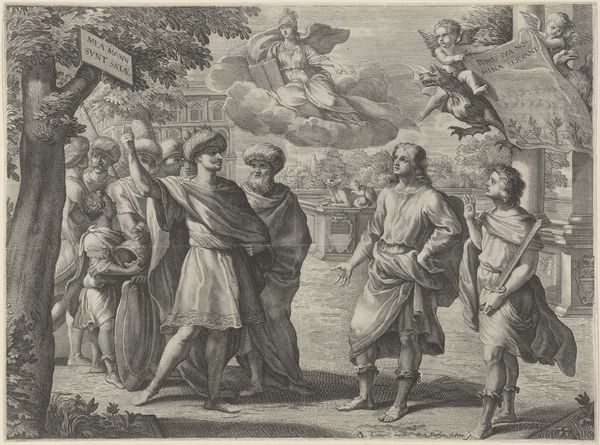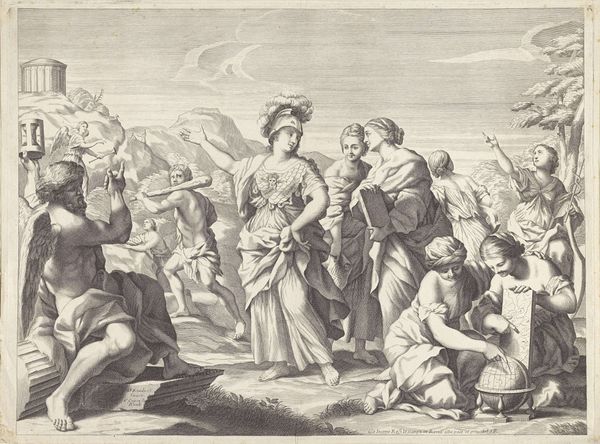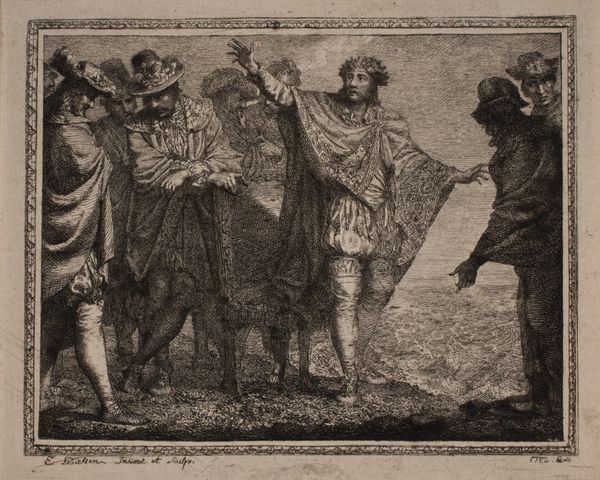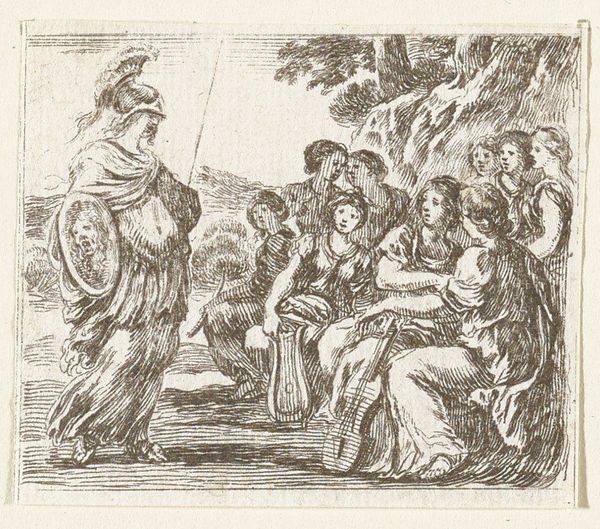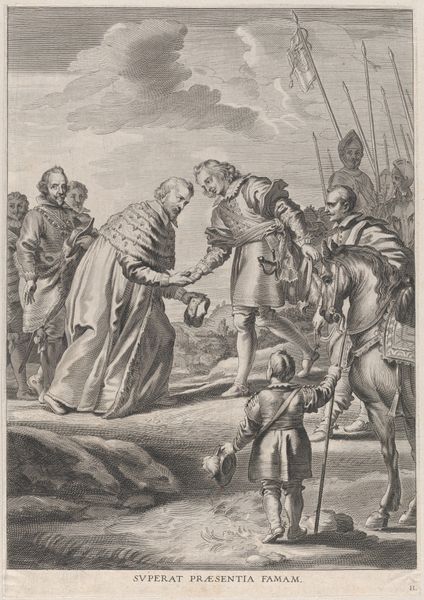
The Frankfurt Altarpiece of the Exaltation of the True Cross_The Questioning of the Jew (bottom left) c. 1603 - 1605
0:00
0:00
painting, oil-paint, oil
#
portrait
#
narrative-art
#
baroque
#
painting
#
oil-paint
#
oil
#
landscape
#
figuration
#
oil painting
#
studio composition
#
child
#
painterly
#
genre-painting
#
history-painting
Dimensions: 15.0 x 16.0 x 0.04 cm
Copyright: Public Domain
This painting, by Adam Elsheimer, part of The Frankfurt Altarpiece, captures a fraught moment. In the foreground, we see a Jew kneeling, being questioned about the location of the True Cross. This scene is laden with cultural significance, reflecting the complex relationship between Christianity and Judaism. Note the pointing gesture of the central female figure. This motif of revelation has deep roots, appearing in various forms across cultures and eras, from classical oratory to religious annunciations. The extended hand, the directed gaze—it's a gesture that transcends time, embodying both authority and guidance. Consider the psychological weight of this image. The act of questioning, the posture of supplication, the judgmental gaze—these elements evoke powerful, often subconscious, responses. The image taps into deeply ingrained cultural memories and prejudices. The symbols, the gestures, the underlying tension—they recur throughout history. The questioning scene in Elsheimer's painting echoes, in a way, the cyclical, non-linear progression of symbols. They resurface, evolve, and take on new meanings in different historical contexts.
Comments
stadelmuseum about 2 years ago
⋮
Only at a second glance can the still life can be recognised as such from the composition of simplified objects with black contours. The artist drew the outlines in charcoal and then filled the spaces with bright complementary colours (red/green, blue/orange, yellow/purple). Jawlensky later wrote that he was able to express that which “vibrated” inside him through colours and forms. The influence of the French artist Henri Matisse is reflected in this abstract style and its relinquishing of a spatial perspective.
Join the conversation
Join millions of artists and users on Artera today and experience the ultimate creative platform.
